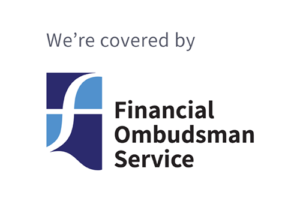Related Articles
Can I get Equity Release on a leasehold property?
More and more homeowners are exploring their Equity Release options, however, there are many rules surrounding Equity Release terms that are taken into consideration by the lender, such as the property type. This post will explore the ins and outs and answer whether you can get Equity Release on a leasehold property.
You can get Equity Release on a leasehold property, however, most lenders will require a minimum of 75 years left on the lease.
With a leasehold property, you own the property itself but you do not own the land the property is built on. For example, you may own the flat itself but not the roof, the land, or any shared areas. There may also be ground rent charges, sell-on clauses, or service charges involved in owning the property.
Therefore the best equity release companies will consider all these rules and factors before approving an Equity Release application or loan on a leasehold. They may take extra time to understand the individual factors associated with that leasehold, and it wouldn’t be as straightforward as releasing equity on a freehold property.
When you purchase a leasehold property, your title of deeds will indicate how long your leasehold agreement is for, these normally range from a 75-99 year lease.
Any flat style purchase in which you own a smaller part of a larger building will be classed as a leasehold.
The leasehold agreement is between the leaseholder and the freeholder (landlord).
For example, if you purchased the flat when it was just built and brand new then you would have the full length of the lease agreement however if you purchased the flat from a previous occupier then you will remove some years (years that the previous occupier was in the flat).
Often the Equity Release lender will require that you have a minimum number of years remaining on the lease. The amount of remaining years each lender will accept is different but in general, the minimum is 75 years, with some lenders accepting 90 years or more.
How does Equity Release Work on a Leasehold?
The Equity Release process on a leasehold is as follow
1) The Equity Release lender will value the property
2) In order to assess whether Equity Release is possible, they will look at the terms of deeds and enquire about the terms of the leasehold.
3) They will also need to assess whether the leasehold property has sufficient equity.
4) The Equity Release lender will also need to be satisfied that the applicant(s) meets their lending criteria.
5) If Equity Release is possible, the Equity Release lender will make an offer that will include any conditions.
6) Once the Equity Release offer is accepted, the legal process can begin.
Types of Equity Release Schemes
Can I get Equity Release on a flat?
You can get Equity Release on a flat but your flat will likely fall under the leasehold category meaning you need to meet certain leasehold requirements such as having 75+ years left on the leasehold agreement.
Is Equity Release available on all flat types?
As with the minimum lease term, lenders will have guidelines about the sorts of leasehold flats on which they would lend on.
Equity Release To Buy A Second Property
Leasehold flats come in a variety of types…
Can I get Equity Release on a purpose built flat?
Purpose-built flats are, as the name implies, flats that were created specifically for the purpose of being flats from the start. A block of flats, for example, would be purpose-built, whereas an existing house that has been divided into two separate dwellings would not. You can get Equity Release on purpose-built flats. If it is over four storeys high then most lenders will require that the flat has a lift along with meeting other lending criteria.
Can I get Equity Release on ex-council flats?
There are a limited amount of lenders who will work with ex-council flats. Most lenders will want to know further information on how many flats within the apartment block are council-owned.
Can I get Equity Release on a studio flat?
You can get equity release on a studio flat or apartment. One-bedroom flats are sometimes falsely labelled as studios. A true studio flat is a single room with everything except a bathroom.
What information will I need for an Equity Release application on a leasehold?
When you apply for Equity Release on a leasehold property such as a flat you will need certain extra information that your provider will be interested in.
Ground Rent information
If you pay ground rent, it will be stated in your leasehold agreement along with when payments should be made, your Equity Release provider will want to see this. In particular they will be concerned if there are rules in place to stop the ground rent from rising.
Sell on fees
Your landlord or freeholder may have it written in the contract that you owe fees upon selling the property. This will need to be noted before any Equity Release plans can be approved.
Buildings Insurance
An Equity Release lender will request a copy of your building’s insurance. You may need to contact your management company directly for a copy of your building’s insurance document because your management firm pays building’s insurance as part of your service charge.
Service charges
Most leasehold properties will apply a service charge to cover things such as maintenance, cleaning, lighting of shared areas, a service charge is normally payable on an annual basis.
What if Equity Release is not an option for my leasehold flat?
If equity release is not an option for your leasehold flat, there are other alternatives available that may help you free up equity from your home such as remortgaging or downsizing.
How do I know if my property is leasehold or freehold?
You can find this information by looking at your title deeds. Your title deeds will state the type of property you own. If you’re not sure, you can ask your solicitor or Equity Release lender to check for you.
How do I check my title of deeds?
If you don’t have a copy of your title deeds, you can get in touch with your local land registry office or ask your Equity Release lender or solicitor to check for you.
Why would an Equity Release lender need to know the term of my lease?
An Equity Release lender needs to know the term of your leasehold agreement as this will have an impact on the value of your property. The Equity Release lender will also need to be satisfied that you will have the lease in place for the required number of years.
Different Types of Equity Release Schemes
Who owns the freehold on a leasehold property?
The freehold is usually owned by the landlord or freeholder. They are responsible for managing and maintaining the common parts of the property, such as the roof, staircases and gardens.
How Can Joslin Rhodes Help?
If you need help and guidance our team are here to help. Use the form below to get in touch.
Join our newsletter for the latest pension and retirement planning updates
"I cannot find fault with the service we received. From the warm yet professional welcome to the financial advice we were given. You as a company should be proud of the service you are providing" Mr. WTalk To The Experts
Ready to talk? Our friendly team are here to help. Simply pop a few details into the form and we'll be in touch.
We'll show you:
When you can afford to retire
How much money you'll need in retirement
How to make the most of your pensions and other assets to fund your lifestyle
4.9 out of 5 stars on VouchedFor




